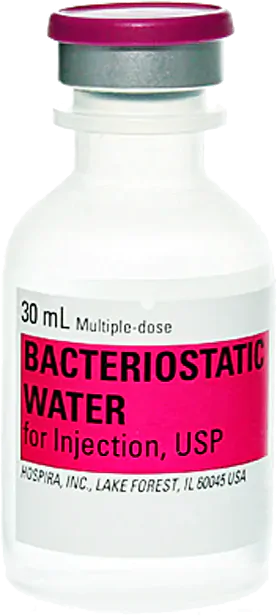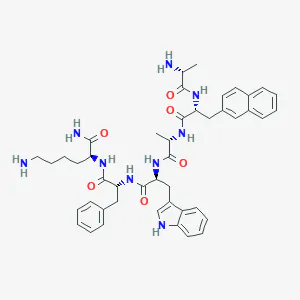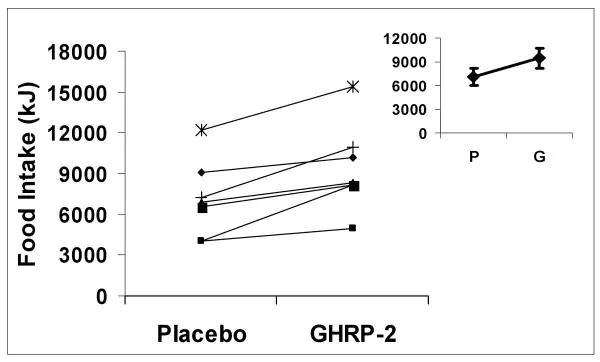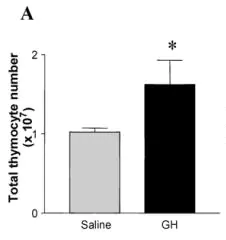



Categorias:Produto acabado de peptídeo, Peptídeos e suas dosagens

Grátis (1) 30 ml de água bacteriostática
com ordens qualificadas sobreUS $ 500 USD.
(Exclui produtos de cápsula, peptídeos cosméticos, códigos promocionais e remessa)
Ghrp-2é um secretagogo do hormônio do crescimento sintético que se liga ao receptor da secretagem do hormônio da grelina/crescimento. Foi demonstrado em ensaios de pesquisa para melhorar o crescimento muscular, regular o sistema imunológico e melhorar os ciclos do sono. A pesquisa do GHRP-2 mostrou que possui bio-atividade oral.
Uso do produto:Este produto é destinado apenas a um produto químico de pesquisa.Essa designação permite o uso de produtos químicos de pesquisa estritamente para testes in vitro e apenas experimentação laboratorial. Todas as informações do produto disponíveis neste site são apenas para fins educacionais. A introdução corporal de qualquer tipo em seres humanos ou animais é estritamente proibida por lei. Este produto deve ser tratado apenas por profissionais qualificados e licenciados. Este produto não é um medicamento, alimento ou cosmético e pode não ser de marca mal, mal utilizada ou incorreta como droga, comida ou cosmético.
O GHRP-2 (também conhecido como Palmorelin) é um secretgogo de hormônio do crescimento sintético conhecido por se ligar ao receptor da secretagem do hormônio da grelina/crescimento. Foi o primeiro dos secretagogues do hormônio do crescimento a ser introduzido e atualmente é comercializado como um peptídeo de teste para a avaliação da deficiência de hormônio do crescimento e insuficiência adrenal secundária. O GHRP-2 foi investigado nos ensaios clínicos do estágio II para a avaliação de estatura curta e está sob pesquisa ativa por seus efeitos no apetite, crescimento muscular, sistema imunológico e ciclos de sono. O GHRP-2 é oralmente e sublingualmente ativo, por isso não precisa ser injetado para ter seus efeitos.

Fonte:PubCh
Sequência:D-ALA-D-2N-ALA-TRP-D-Phe-Lys
Fórmula Molecular:C45H55N9O6
Peso molecular:817.9749 g/mol
Pubchem CID: 6918245
Número CAS:158861-67-7
Nomes de código:KP-102, GPA-748, Way-GPA-748
Pesquisas em iaques indicam que o GHRP-2 pode aumentar o crescimento muscular de duas maneiras: aumento da deposição de proteínas e diminuição da degradação das proteínas. A pesquisa mostrou que o GHRP-2 pode superar os platôs de crescimento natural que ocorrem em iaques devido à privação de alimentos, doenças e condições ambientais adversas (por exemplo, frio)[1]. The most profound finding from this study is that GHRP-2 reduces muscle atrophy by inactivating atrogin-1 and MuRF1, proteins that control the muscle degradation pathway[2]. There is hope that these findings could be used to reduce the catabolism common in chronic illnesses like autoimmune disease, cancer, and more.
Of course, by activating growth hormone and insulin-like growth factor-1, GHRP-2 helps to boost muscle protein deposition. The combined effect of reducing degradation and enhancing deposition is that GHRP-2 encourages the development of lean body mass even in adverse conditions[3].
GHRP-2 has been shown to boost food intake[4], [5]. Though this may not seem acutely important, appetite stimulation in the setting of chronic disease is an important part of overall health care. The ability to easily and reliably stimulate appetite could help doctors treat chronically ill patients and improve long-term outcomes.

Food intake in healthy adult men, placebo versus GHRP-2
Source: PubMed
Research in fetal heart cell culture lines shows that GHRP-2 and its analogues (GHRP-1 and GHRP-6) can help to protect heart cells by reducing apoptosis or programmed cell death[6]. This is of particular importance following heart attack, when heart cells are particularly prone to apoptosis thanks to decreased blood and thus nutrient supply. Research using an analogue of GHRP-2 called Hexarelin has indicated that there may be a specific receptor for these peptides[7]. Identifying new receptors in any tissue opens pathways for new drug development, but also deepens our understanding of the human physiology and how to prevent dysfunction in the first place.
GHRP-2 has been shown to stimulate the thymus, an organ responsible for protecting certain cells of the immune system. In particular., the thymus helps T cells to mature. T cells are critical for adaptive immunity and our ability to fight off complex infections. Function of the thymus declines with age, which leads to a number of age-related dysfunctions ranging from inadequate tissue repair to lost immunity and thus an inability to fight off infections, guard against cancer, and maintain normal tissue function. GHRP-2 has been shown to rejuvenate the thymus, boosting the number and diversity of T-cells it produces[8]. This leads to improved immunity.

Change in number of active T-cells following administration of GHRP-2
Source: PubMed
GHRP-2 has been shown to increase the duration stages 3 and 4 of the sleep cycles by about 50% each while increasing REM sleep by approximately 20% while reducing the amount that an individual deviates from “normal sleep” by as much as a third. Overall, the improvement in sleep led to improvement in cognitive function, blood pressure, healing, and energy levels[9]. These findings, while useful to all adults, are particularly important in the elderly, where the effects of aging take a toll on sleep quality. GHRP-2 may be useful in understanding how to fine-tune sleep to improve quality and maybe even help people get all the benefits of a full night’s sleep in a fraction of the time.
It was originally thought that observations of decreased pain in animal models of osteoarthritis were the result of GHRP-2 boosting growth hormone levels and accelerating healing in the damaged tissues. Keen scientists observed, however, that the pain relief preceded healing by a substantial margin, suggesting that GHRP-2 may have direct effects on pain perception. As it turns out, GHRP-2 has action at the opioid receptors[10].
There are four known opioid receptors. Most opioid pain medications do not discriminate between them. This is problematic because while some of the receptors mediate pain, others affect things like wakefulness and breathing while still others impact addiction. GHRP-2 is a selective opioid receptor agonist, binding primarily to the receptors responsible for pain relief, sedation, and addiction. This finding indicates that it may be possible to produce selective opioid agonists and therefore mitigate or prevent entirely undesirable effects like respiratory depression and addiction.
GHRP-2 exhibits minimal to moderate side effects, low oral and excellent subcutaneous bioavailability in mice. Per kg dosage in mice does not scale to humans. GHRP-2 for sale at
The above literature was researched, edited and organized by Dr. Logan, M.D. Dr. Logan holds a doctorate degree from Case Western Reserve University School of Medicine and a B.S. in molecular biology.
Jean-Alain Fehrentz was born in Nancy, France, in 1955. He received his Ph.D. degree in Chemistry from the University of Nancy in 1983 and joined the Centre CNRS-INSERM de Pharmacologie Endocrinologie of Montpellier in the research group of Professor B. Castro. From 1989 to 1992 he was appointed as researcher at Sanofi Research in Montpellier. Then he moved to the Faculty of Pharmacy of Montpellier, working under the direction of Professor J. Martinez. His research interests focus onpeptide aldehydes, enzyme inhibitors, peptidomimetics, growth hormone interactions, and heterocycle based receptor ligands. He has published more than 150 scientific papers.
Jean-Alain Fehrentz is being referenced as one of the leading scientists involved in the research and development of GHRP-2. In no way is this doctor/scientist endorsing or advocating the purchase, sale, or use of this product for any reason. There is no affiliation or relationship, implied or otherwise, between
ALL ARTICLES AND PRODUCT INFORMATION PROVIDED ON THIS WEBSITE ARE FOR INFORMATONAL AND EDUCATIONAL PURPOSES ONLY.
The products offered on this website are furnished for in-vitro studies only. In-vitro studies (Latin: in glass) are performed outside of the body. These products are not medicines or drugs and have not been approved by the FDA to prevent, treat or cure any medical condition, ailment or disease. Bodily introduction of any kind into humans or animals is strictly forbidden by law.
PeptideGurus is a leading supplier of American-made research peptides, offering top-quality products at competitive prices. With a focus on excellence and customer service, they ensure a secure and convenient ordering process with global shipping.
CONTACT